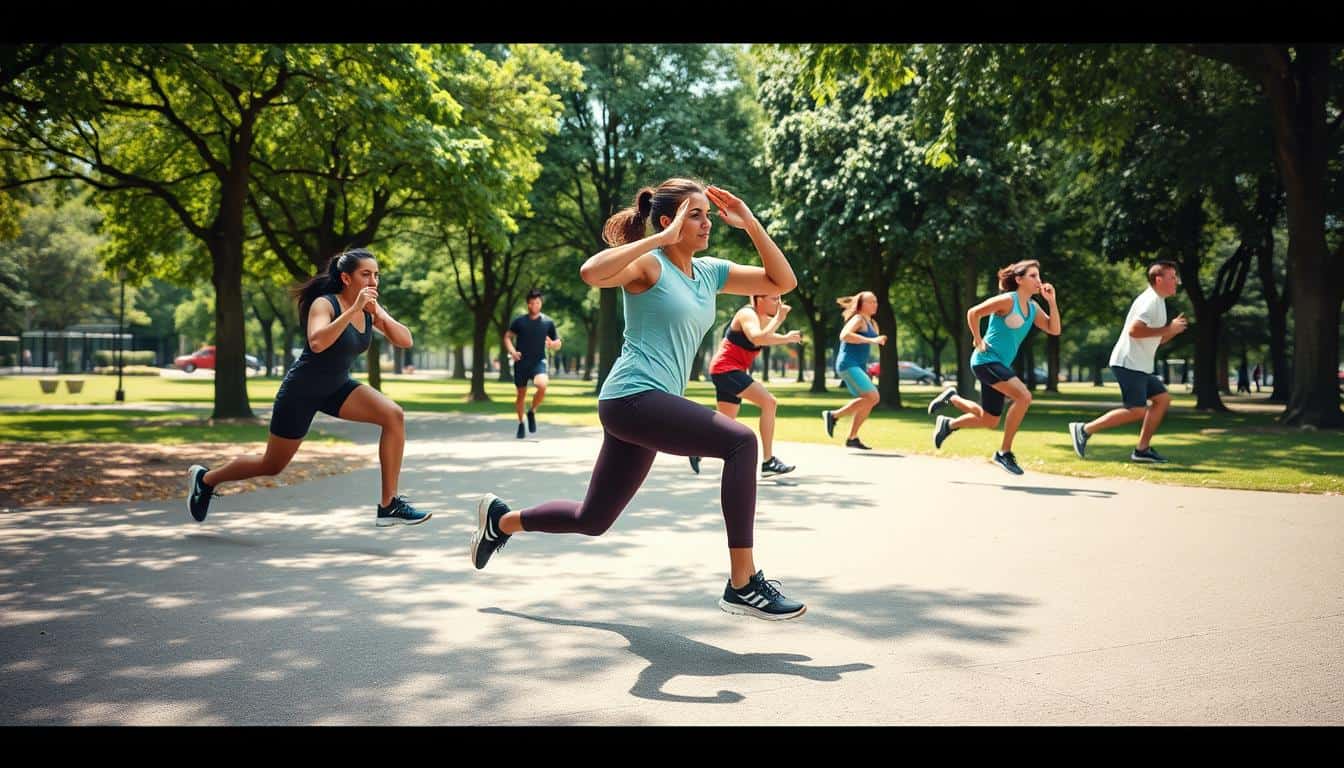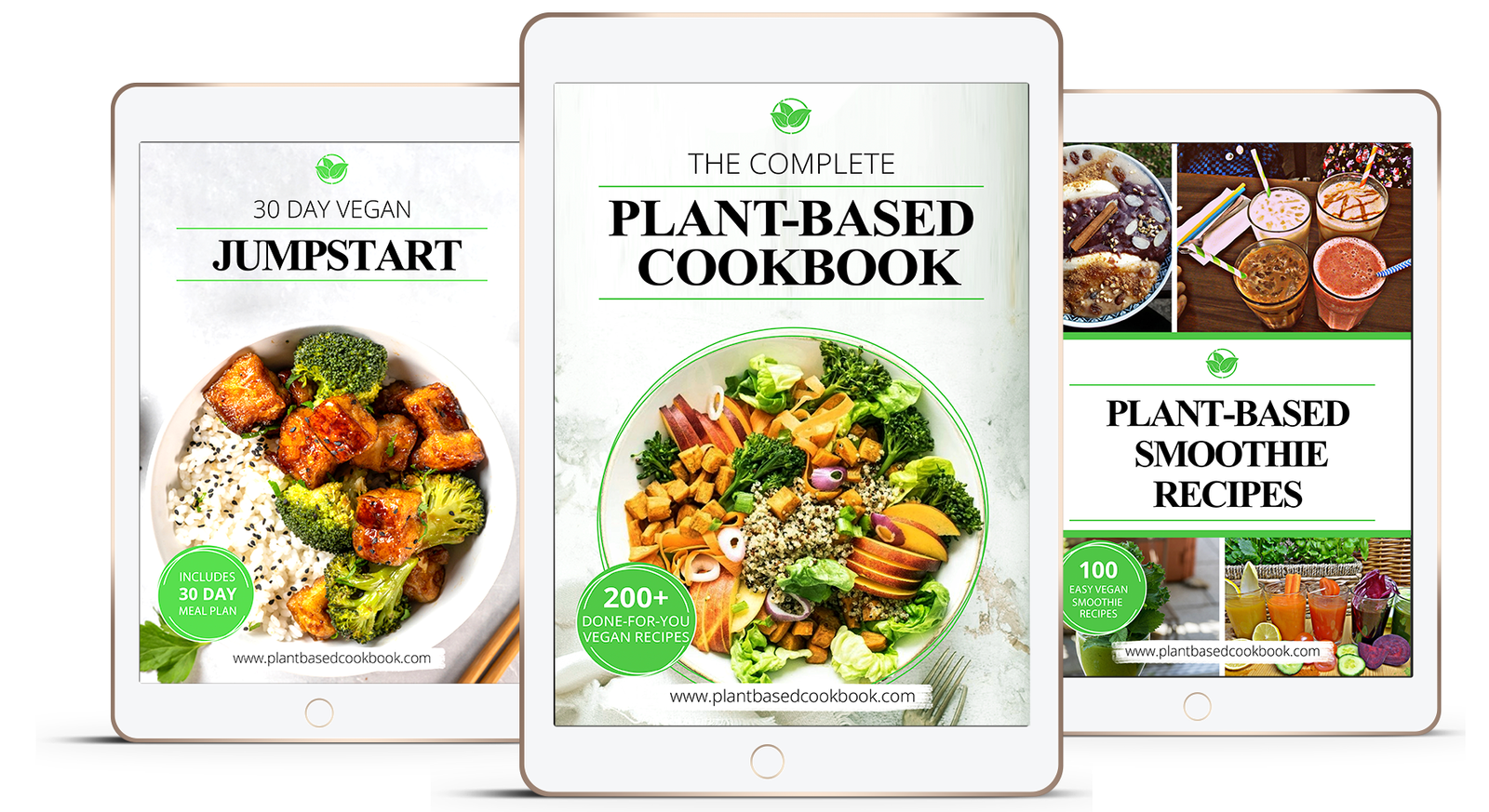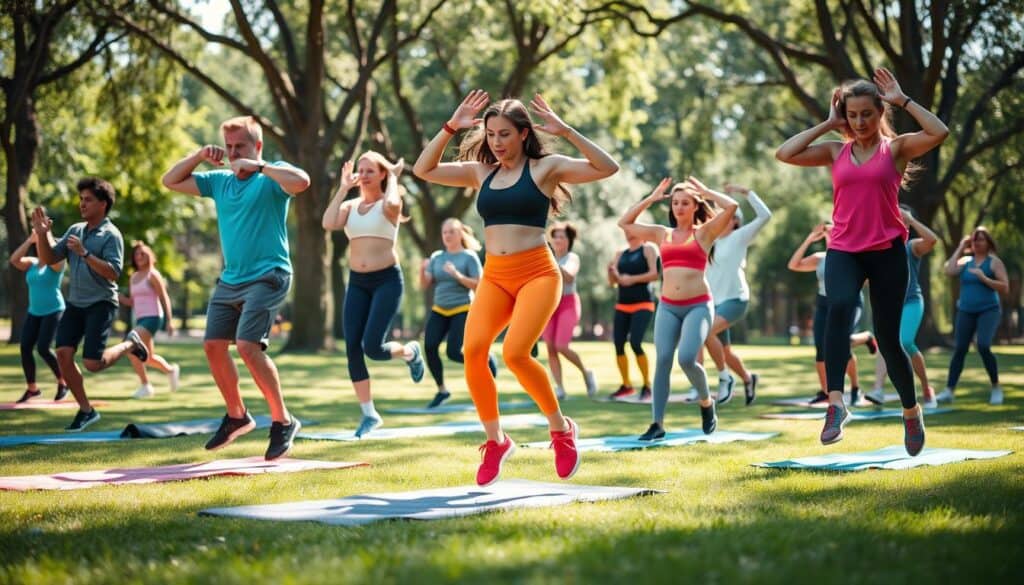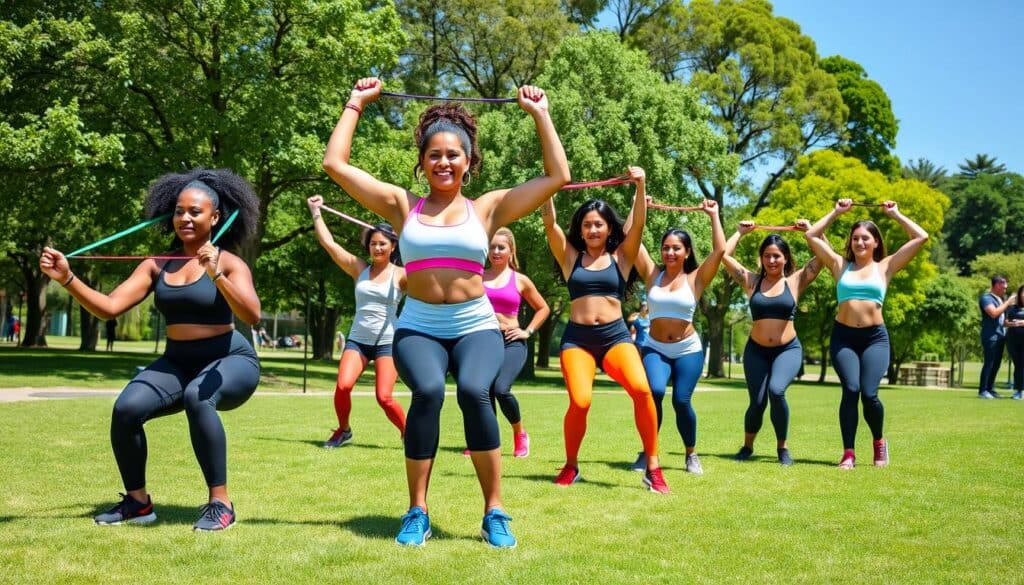(Hey! Some links in this post may be affiliate links — meaning I may earn a small commission if you buy through them, at no extra cost to you. As an Amazon Associate, I earn from qualifying purchases. I only share products I genuinely love and think you’ll find useful too. Read the full disclosure here).
High-Intensity Interval Training (HIIT) workouts are designed for efficient and effective exercise routines. These workouts alternate between periods of intense effort and active recovery, pushing your body to its limits in short bursts. HIIT has been shown to be highly beneficial for improving respiratory endurance, cardiovascular health, and metabolic.
What makes HIIT workouts so appealing is their versatility – you can do them anywhere, whether at home, in the park, or even at the office. These workouts typically last around 20 minutes and should leave you feeling thoroughly exhausted, utilizing approximately 90% of your energy levels during the high-intensity phases.
Contents
- 1 What Are HIIT Workouts?
- 2 Why Choose HIIT for Your Workout Routine?
- 3 Essential Equipment for HIIT Workouts
- 4 Warm-Up Routines to Start Your HIIT
- 5 Workout 1: Basic Bodyweight HIIT
- 6 Workout 2: HIIT with Resistance Bands
- 7 Workout 3: HIIT for True Beginners
- 8 Workout 4: Tabata-Style HIIT
- 9 Workout 5: Outdoor HIIT Routine
- 10 Cool Down After Your HIIT Workout
- 11 Tips for Staying Motivated with HIIT
- 12 Final Thoughts on Incorporating HIIT
- 13 FAQ
- 13.1 What is HIIT?
- 13.2 What are the benefits of HIIT workouts?
- 13.3 How long are HIIT workouts typically?
- 13.4 What equipment is needed for HIIT?
- 13.5 Why is a warm-up important for HIIT?
- 13.6 What is a basic bodyweight HIIT workout?
- 13.7 How can resistance bands be used in HIIT?
- 13.8 What is a beginner-friendly HIIT workout?
- 13.9 What is Tabata training?
- 13.10 How can HIIT be done outdoors?
- 13.11 Why is cooling down important after HIIT?
- 13.12 How can I stay motivated with HIIT workouts?
- 13.13 What are the long-term benefits of incorporating HIIT?
Key Takeaways
- HIIT workouts are highly effective for improving fitness and burning fat.
- These workouts can be done anywhere, making them ideal for busy schedules.
- A typical HIIT session lasts around 20 minutes and should push you to 90% of your effort.
- HIIT workouts alternate between intense and recovery periods to maximize results.
- Incorporating HIIT into your routine can lead to significant improvements in overall health and fitness.
What Are HIIT Workouts?
High-Intensity Interval Training (HIIT) is a dynamic workout regimen that has gained immense popularity in recent years. HIIT involves alternating periods of maximum effort and short recovery, pushing the body to its limits for a concentrated period. This type of training has been shown to improve respiratory endurance, cardiovascular health, and metabolic function.
Definition and Concept of HIIT
At its core, HIIT workouts consist of short bursts of intense exercise followed by brief recovery periods. These intervals can range from 15 seconds to 4 minutes, with the recovery periods typically matching the duration of the intense segments. This pattern of exertion and rest is repeated several times, creating a challenging and efficient workout.
Benefits for Fitness Enthusiasts
HIIT offers a wide range of benefits for fitness enthusiasts of all levels. By combining cardio drills and metabolic conditioning, HIIT workouts can help improve heart health, burn a significant number of calories in a short amount of time, and provide a time-efficient training option for those with busy schedules. Studies have even suggested that HIIT may be superior to moderate continuous cardiovascular activity for patients with heart failure and metabolic syndrome.
“HIIT workouts can lead to the body burning calories for about 2 hours after exercising.”
Whether you’re looking to shed excess weight, build muscle, or simply improve your overall fitness, HIIT can be a highly effective and efficient addition to your workout routine.
Why Choose HIIT for Your Workout Routine?
If you’re looking to maximize your fitness results in minimal time, high-intensity interval training (HIIT) could be the perfect solution. HIIT workouts are designed to be short yet highly effective, typically lasting around 20 minutes. These calorie-blasting routines offer versatility, allowing you to incorporate a variety of bodyweight circuits and exercises that can be performed anywhere, with little to no equipment required.
Time Efficiency in Training
One of the primary advantages of HIIT is its time efficiency. While traditional steady-state cardio or strength training sessions may require 45 minutes or more, HIIT can deliver visible results in just 20 minutes. This makes it an ideal choice for busy individuals who want to maintain their fitness without sacrificing too much time from their busy schedules.
Variety and Flexibility of Exercises
HIIT workouts are known for their versatility, allowing you to mix and match a wide range of exercises to keep your routine fresh and challenging. From burpees and jumping jacks to mountain climbers and squat jumps, the possibilities are endless. This variety not only prevents boredom but also targets different muscle groups, ensuring a well-rounded and effective workout.
Whether you prefer bodyweight circuits or resistance training, HIIT can be easily adapted to your fitness level and preferences. This flexibility ensures that HIIT remains an engaging and accessible form of exercise for individuals of all skill levels.
Essential Equipment for HIIT Workouts
High-Intensity Interval Training (HIIT) is a highly effective workout regimen that can be done with minimal equipment. The focus of HIIT is on athletic training through sweat-inducing workouts, which primarily rely on bodyweight exercises. However, there are a few essential gear items that can enhance your HIIT experience, especially for beginners and advanced fitness enthusiasts.
Must-Have Gear for Beginners
For those new to HIIT, the most important piece of equipment is a yoga mat. This provides a comfortable surface for floor exercises, protecting your joints during high-impact movements. A quality workout mat can make a significant difference in your overall comfort level and exercise performance.
Optional Equipment for Advanced Workouts
- Resistance Bands: These versatile bands can be used to add extra resistance to your exercises, increasing the intensity of your HIIT workouts.
- Dumbbells or Kettlebells: Incorporating light weights can take your HIIT exercises to the next level, targeting specific muscle groups and boosting the overall intensity.
- Proper Footwear: Investing in a good pair of athletic shoes with ample support and cushioning is crucial for high-impact activities like HIIT.
- Interval Timer: A simple interval timer or smartphone app can help you keep track of your work and rest periods, ensuring you maintain the optimal HIIT structure.
By having the right equipment on hand, you can elevate your HIIT workouts and maximize the benefits of this highly effective training method. Remember, the key to successful HIIT is maintaining proper form and intensity, regardless of the equipment you choose to use.
Warm-Up Routines to Start Your HIIT
Preparing your body for a high-intensity workout is crucial to maximize performance and minimize the risk of injury. Dynamic stretches and light cardio warm-ups are essential before diving into your HIIT (High-Intensity Interval Training) routine. These warm-up exercises gradually increase your heart rate and body temperature, readying your muscles and joints for the intense workout ahead.
Dynamic Stretches to Prepare Your Body
Begin your warm-up with a series of dynamic stretches that target the major muscle groups you’ll be utilizing during your HIIT workouts. These include leg swings, arm circles, torso twists, and light jogging in place. Dynamic stretches help improve mobility and flexibility, priming your body for the explosive movements to come.
- Leg Swings (front-to-back and side-to-side)
- Arm Circles (forward and backward)
- Torso Twists
- Jogging in Place
Importance of Warm-Up in HIIT
Research shows that a proper warm-up can reduce the risk of injury during exercise by up to 80%. HIIT workouts in particular require a thorough warm-up, as the high-intensity movements can be hard on the body if not properly prepared. Spending just 5-10 minutes on a warm-up routine can significantly improve your workout performance and help you get the most out of your HIIT workouts.
“Warming up improves performance in 79% of studied criteria, with improvements ranging from 1% to 20%.”
Remember, a warm-up is not just about raising your heart rate; it’s about preparing your body’s muscles, joints, and connective tissues for the intense demands of your HIIT session. By taking the time to warm up properly, you’ll be well on your way to a safe and effective high-intensity workout.
Workout 1: Basic Bodyweight HIIT
Get ready to ignite your fat-burning potential with this basic bodyweight HIIT (High-Intensity Interval Training) workout. These cardio drills and exercises are perfect for beginners looking to elevate their fitness journey without any equipment.
Exercise List for Beginners
- Burpees
- Squats
- Push-ups
- Mountain Climbers
Sample Workout Routine
This 20-minute HIIT routine will have you sweating and feeling the burn. Perform each exercise for 30 seconds, followed by a 10-second rest. Repeat this sequence for 4 rounds, targeting multiple muscle groups and providing an effective cardio session. Remember to maintain proper form throughout to maximize the benefits and prevent injuries.
By incorporating these fat-burning exercises and cardio drills into your routine, you’ll boost your metabolism, improve cardiovascular endurance, and build lean muscle. Consistent practice of this basic bodyweight HIIT workout will help you achieve your fitness goals, whether it’s weight loss, increased strength, or overall well-being.
“HIIT workouts are a game-changer for those seeking efficient, effective, and versatile training methods.”
Unlock your full potential with this beginner-friendly HIIT workout and discover how to enhance your memory and boost your intelligence for a well-rounded approach to health and fitness.
Workout 2: HIIT with Resistance Bands
Resistance bands are a versatile and effective tool to incorporate into your HIIT (High-Intensity Interval Training) workouts. These portable, lightweight bands not only add variety to your training but also challenge your muscles in unique ways, elevating the intensity and metabolic conditioning of your routine.
Benefits of Using Resistance Bands
Resistance bands offer several advantages for fitness enthusiasts and athletes alike. They engage more muscle groups, leading to increased muscle activation and enhanced metabolic conditioning. Additionally, their portability makes them an excellent choice for athletic training on the go, allowing you to get a challenging workout anywhere, anytime.
Sample Exercises to Try
Incorporating resistance bands into your HIIT workouts can be both fun and effective. Here are a few exercises to try:
- Banded Squats: Stand on the resistance band with your feet shoulder-width apart, holding the ends of the band at shoulder height. Perform squats, feeling the added resistance from the band.
- Resistance Band Rows: Anchor the resistance band to a sturdy surface and stand with your feet shoulder-width apart. Pull the band towards your chest, engaging your back and biceps.
- Banded Jumping Jacks: Stand on the resistance band with your feet together. Jump out, spreading your feet while raising your arms overhead, then jump back to the starting position.
To create a sample HIIT workout with resistance bands, try the following:
- Perform each exercise for 40 seconds, followed by 20 seconds of rest.
- Repeat this work-to-rest ratio for a total of 3 rounds.
- Complete the entire circuit, taking a 60-second rest between rounds.
This resistance band HIIT workout can be a great addition to your fitness routine, helping to boost your metabolic conditioning and take your athletic training to the next level.
“Resistance bands are a game-changer for HIIT workouts. They add an extra challenge and help me push my limits with every session.”
Remember to start with lighter resistance bands and gradually increase the intensity as your strength and endurance improve. Consistency and proper form are key to maximizing the benefits of this type of HIIT workout.
Vital Life Tipsis committed to providing useful and engaging content to help you optimize your fitness journey. Be sure to check out theirother resourcesfor more tips and guidance.
Workout 3: HIIT for True Beginners
If you’re new to the world of fitness, don’t worry – HIIT workouts can be tailored to suit your needs. Beginner-friendly HIIT routines focus on easy-to-follow movements that gradually increase in intensity as your fitness level improves. These workouts are designed to help you build a strong foundation and boost your confidence, setting you up for long-term success.
Easy-to-Follow Movements
Start with modified exercises like wall push-ups, squat holds, and marching in place. These low-impact movements allow you to master the proper form before progressing to more challenging exercises. By focusing on controlled, deliberate movements, you’ll build the necessary strength and coordination to take your HIIT workouts to the next level.
Modifications for Increased Intensity
As you become more comfortable with the basic exercises, gradually increase the intensity by reducing your rest periods and extending your work intervals. For example, begin with 45 seconds of work and 30 seconds of rest, then work your way up to 60 seconds of work and 20 seconds of rest. You can also add more challenging exercises, such as jump squats or full push-ups, to keep your body guessing and your progress steady.
A sample beginner HIIT workout could include 3 rounds of 4 exercises, such as wall push-ups, squat holds, marching in place, and jumping jacks. As your fitness improves, you can customize the workout by swapping in different bodyweight circuits or HIIT workouts to keep your routine fresh and challenging.
“HIIT workouts are a great way for beginners to build a strong foundation and see impressive results in a short amount of time.”
Remember, the key to successful HIIT is to start at a pace and intensity that feels comfortable, then gradually push yourself to new heights. With consistency and patience, you’ll be crushing bodyweight circuits and HIIT workouts in no time!
Workout 4: Tabata-Style HIIT
Get ready to take your high-intensity interval training (HIIT) to the next level with the Tabata protocol. Tabata is a form of HIIT that involves 20 seconds of maximum-effort exercise followed by 10 seconds of rest, repeated 8 times for a total of 4 minutes. This calorie-blasting routine is known for its efficiency in improving both aerobic and anaerobic fitness.
Understanding the Tabata Method
Tabata workouts typically last for 20 minutes, consisting of eight intervals of 20 seconds of intense exercise followed by 10 seconds of rest. This format is designed to push your body to its limits, causing it to create nitric oxide for vasodilation and enhance blood circulation throughout the body, promoting better oxygen and nutrient delivery. Studies have shown that Tabata can increase cardiorespiratory endurance significantly in a short time span.
Sample Tabata Workout
- 4 minutes of burpees
- 1-minute rest
- 4 minutes of mountain climbers
- 1-minute rest
- 4 minutes of squat jumps
This 16-minute Tabata-style HIIT workout is a great way to incorporate high-intensity, calorie-blasting routines into your fitness regimen. Remember to start slowly, adjust the intensity as needed, and focus on proper form to avoid injury. Tabata is an excellent choice for those who want to maximize their workout time and see significant improvements in their fitness and overall health.
“Tabata training was significantly less enjoyable compared to other less intense types of exercise, especially as the duration of the study progressed.”
While Tabata may be challenging, the rewards are worth it. By pushing yourself to the limits during those 20-second intervals, you’ll see benefits such as improved cardiovascular fitness, increased weight loss, and enhanced endurance and stamina. Incorporate Tabata into your routine a few times a week, and you’ll be on your way to reaching your fitness goals.
Remember, as with any high-intensity workout, it’s crucial to listen to your body, start slowly, and gradually increase the duration and intensity of your Tabata sessions. Warming up properly and cooling down afterward are also essential for preventing injuries and maximizing the benefits of your HIIT workout.
Workout 5: Outdoor HIIT Routine
If you’re tired of the same old sweat-inducing workouts indoors, it’s time to take your high-intensity interval training (HIIT) routine outdoors. By harnessing the beauty and natural elements of the great outdoors, you can add a refreshing twist to your fat-burning exercises.
Harnessing Nature for Your Workout
Outdoor HIIT workouts allow you to utilize your surroundings, such as hills, benches, and even park equipment, to get an effective and challenging full-body workout. Some exercises you can incorporate into your outdoor HIIT routine include hill sprints, bench step-ups, and park bench dips – all of which can provide a unique and invigorating experience compared to your typical indoor gym sessions.
Tips for a Successful Outdoor Session
- Choose a safe and secure location, free from obstacles and heavy traffic.
- Bring a water bottle to stay hydrated throughout your sweat-inducing workout.
- Be mindful of weather conditions and adjust your routine accordingly, ensuring your safety.
Outdoor HIIT workouts can add a refreshing change of pace to your fitness routine, allowing you to enjoy the great outdoors while engaging in fat-burning exercises. Whether you’re tackling hill sprints or utilizing park benches for dips, these workouts can leave you feeling energized and accomplished.
“Outdoor HIIT workouts are a fantastic way to mix up your fitness routine and challenge your body in new ways. The fresh air and natural elements can provide an extra boost of motivation and energy during your sweat-inducing sessions.”
By incorporating an outdoor HIIT routine into your fitness regimen, you’ll not only enjoy the benefits of high-intensity interval training but also the rejuvenating effects of being in nature. Embrace the great outdoors and take your fat-burning exercises to new heights!
Cool Down After Your HIIT Workout
Completing a vigorous HIIT workout is an incredible way to challenge your body and push your fitness to new heights. However, the cool-down phase is just as essential for maximizing the benefits of your training. Properly cooling down after HIIT workouts helps gradually lower your heart rate, prevents dizziness or fainting, and reduces muscle soreness. By incorporating an effective cool-down routine, you can ensure your body transitions smoothly from the high-intensity exercise to a resting state.
Importance of Cooling Down
A study published in the Journal of Human Kinetics found that a cooldown increased circulation and the removal of waste in exercised muscles to reduce the onset of muscle soreness later. Incorporating cooldown exercises into your workout routine can help maximize results over time by reducing muscle soreness, preventing dizziness or lightheadedness, and promoting relaxation. Different types of workouts, such as strength training and cardio, require varying cooldown approaches tailored to the muscles worked and the intensity of the exercise.
Effective Stretching Techniques
A well-rounded cooldown should involve exercises like jogging or walking after cardio workouts, followed by static stretches targeting major muscle groups. Cooldown exercises such as child’s pose, hip flexor stretches, cat-cow stretches, and spinal twists are beneficial for relaxing muscles and promoting recovery after intense HIIT workouts. Specific cooldown exercises like chest openers, runner’s lunges, and downward-facing dog can target different muscle groups based on the type of HIIT workouts completed.
Skipping an after-workout cooldown may be acceptable for low-intensity exercises, but incorporating a few minutes of relaxation exercises can enhance recovery and overall well-being. After completing a HIIT workout, incorporating a cool-down routine can help with muscle soreness and aid in recovery. The 4-Exercise HIIT Cool Down Series includes the Inch Worm, Downward-Facing Dog with Foot Pedal, The World’s Greatest Stretch, and Catcher’s Position with Rotation. Each exercise in the cool-down series should be repeated around 10 times to achieve optimal benefits, with each stretch held for about three to five seconds to aid in muscle flexibility and recovery.
Tips for Staying Motivated with HIIT
Maintaining motivation is key when it comes to high-intensity interval training (HIIT) workouts. These fast-paced, cardio-focused routines can be challenging, but the rewards are well worth the effort. To keep your HIIT journey on track, consider these practical tips.
Setting Goals and Tracking Progress
Start by setting specific, measurable goals for your HIIT workouts. Whether it’s to improve your endurance, increase the number of sprints, or shave time off your routine, having a clear target will help you stay motivated. Use fitness apps or a simple workout journal to track your progress and celebrate your achievements along the way.
Finding Your HIIT Community
Joining an online HIIT community or finding a workout buddy can be a game-changer for motivation. Sharing your experiences, challenges, and victories with like-minded individuals can provide the accountability and support you need to push through those tough sessions. Connecting with others who are on a similar fitness journey can make the process more enjoyable and sustainable.
Remember, consistency is key when it comes to HIIT workouts. Vary your routines to prevent boredom and continually challenge yourself. With the right mindset and a supportive community, you’ll be well on your way to unlocking the incredible benefits of high-intensity interval training.
Final Thoughts on Incorporating HIIT
As you embark on your high-intensity interval training (HIIT) journey, it’s essential to recognize the numerous long-term benefits it can offer for your health and fitness. Regular HIIT workouts have been shown to improve cardiovascular health, increase your metabolism, and enhance fat-burning capabilities, making it a highly effective and time-efficient form of exercise.
Long-Term Benefits for Health and Fitness
By incorporating HIIT into your routine, you can expect to see significant improvements in your overall fitness and body composition over time. These exercises not only boost your cardiovascular endurance but also help to build muscle, increase bone density, and promote better metabolic conditioning. The benefits of HIIT can extend far beyond the confines of the workout itself, positively impacting your overall well-being and reducing the risk of various health conditions.
Making HIIT a Part of Your Lifestyle
To experience the full advantages of HIIT, it’s important to make it a sustainable part of your lifestyle. Start by incorporating 2-3 HIIT sessions per week, allowing for adequate recovery between workouts. As your fitness level improves, you can gradually increase the frequency or intensity of your HIIT workouts. Remember to listen to your body and adjust your routine as needed to prevent burnout and ensure long-term success. With a commitment to consistent high-intensity training, you’ll be well on your way to achieving your fitness goals and living a healthier, more active lifestyle.
FAQ
What is HIIT?
HIIT (High-Intensity Interval Training) is designed for efficient workouts, alternating between high and low-intensity exercises. It increases anaerobic and aerobic capacity, potentially improving fat loss and metabolism.
What are the benefits of HIIT workouts?
HIIT improves respiratory endurance, cardiovascular health, and metabolic function. Benefits include improved heart health, major calorie burn, and time efficiency.
How long are HIIT workouts typically?
HIIT workouts are shorter yet highly effective, typically lasting around 20 minutes. They offer versatility, allowing for various exercise combinations and can be performed anywhere with minimal or no equipment.
What equipment is needed for HIIT?
HIIT primarily relies on bodyweight exercises, requiring no equipment. However, beginners might benefit from a yoga mat, and advanced workouts may use resistance bands, dumbbells, or kettlebells.
Why is a warm-up important for HIIT?
A proper warm-up is crucial before HIIT to prevent injury and maximize performance. Dynamic stretches prepare the body for intense activity and gradually increase heart rate and body temperature.
What is a basic bodyweight HIIT workout?
A basic bodyweight HIIT workout includes exercises like burpees, squats, push-ups, and mountain climbers, performed for 30 seconds with 10 seconds of rest, repeated for 4 rounds.
How can resistance bands be used in HIIT?
Resistance bands add variety and intensity to HIIT workouts, increasing muscle engagement. Sample exercises include banded squats, resistance band rows, and banded jumping jacks.
What is a beginner-friendly HIIT workout?
Beginner-friendly HIIT includes modified exercises like wall push-ups, squat holds, and marching in place, with longer work and rest periods. As fitness improves, the workout can be made more challenging.
What is Tabata training?
Tabata is a form of HIIT involving 20 seconds of maximum effort followed by 10 seconds of rest, repeated 8 times for a total of 4 minutes. It is known for its efficiency in improving both aerobic and anaerobic fitness.
How can HIIT be done outdoors?
Outdoor HIIT utilizes natural elements and terrain, with exercises like hill sprints, bench step-ups, and park bench dips. Outdoor workouts can add variety and fresh air to your fitness routine.
Why is cooling down important after HIIT?
Cooling down is crucial after HIIT to gradually lower heart rate and prevent dizziness or fainting. It also helps reduce muscle soreness through light cardio and static stretches.
How can I stay motivated with HIIT workouts?
Maintain motivation by setting specific, measurable goals and tracking progress. Join online HIIT communities or find a workout buddy for accountability and support. Vary your routines to prevent boredom and challenge yourself.
What are the long-term benefits of incorporating HIIT?
HIIT offers numerous long-term benefits, including improved cardiovascular health, increased metabolism, and enhanced fat burning. Regular HIIT can lead to better overall fitness and body composition.
Unlock Your True Potential
Ever wondered how to tap into your hidden creative genius and elevate your cognitive abilities? The Genius Wave combines cutting-edge binaural beat technology with neuroscientific insights to help you think sharper, learn faster, and attract more opportunities. Endorsed by former NASA neuroscientists, this program is designed to seamlessly fit into your daily routine and transform the way you approach challenges and opportunities.
👉 Click here to learn more about The Genius Wave and how it can elevate your life!













